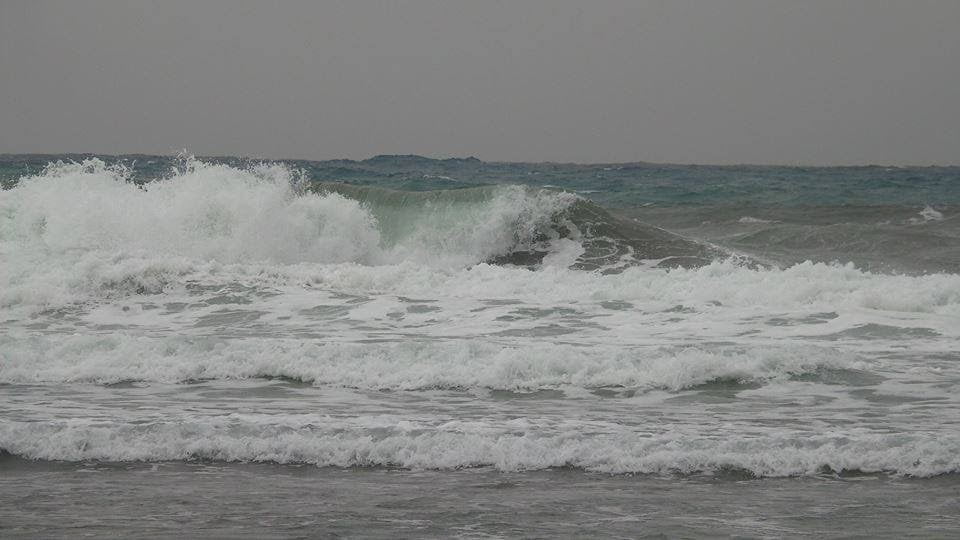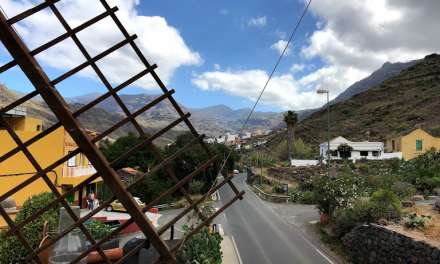 The Government of the Canary Islands General Directorate of Security and Emergencies has announced an alert for heavy seas throughout the Canary Islands from 03:00 on Sunday.
The Government of the Canary Islands General Directorate of Security and Emergencies has announced an alert for heavy seas throughout the Canary Islands from 03:00 on Sunday.
The alert is in direct response to the Spanish State Meteorological Agency, AEMET, who have forecast adverse coastal phenomena issuing an orange advisory for most of the coasts of the Archipelago.
This Saturday there have been rains at several points around Gran Canaria, and an Atlantic cold front is expected to move in from the north of us.
 On the north of the island, cloudy skies with frequent rain, generally weak, is expected, more intense and persistent inland; elsewhere on south facing slopes, cloudy with a low probability of drizzle.
On the north of the island, cloudy skies with frequent rain, generally weak, is expected, more intense and persistent inland; elsewhere on south facing slopes, cloudy with a low probability of drizzle.
 Temperatures will see few changes, lows of 13˚C and highs of 18˚C.
Temperatures will see few changes, lows of 13˚C and highs of 18˚C.
Strong northwesterly winds, with strong gusts in inland areas and occasionally very strong gusts on the northeast that could reach or exceed 70km/h during the first half of the day, decreasing to strong winds with a low probability of some occasionally strong gusts from noon.
By Monday the rains should be decreasing in intensity, with some early morning wet weather still likely that should weaken from noon, and give way to a Tuesday with predominantly high clouds, in general few changes to the temperatures though they may rise slightly. Skies should clear as we progress through next week.
“The Government of the Canary Islands, through the General Directorate of Security and Emergencies, declares as of 03:00 hours on January 7, a situation of ALERT for COASTAL PHENOMENA in the CANARY ISLANDS.
This decision is made taking into account the information provided by the State Meteorological Agency and other available sources, and in application of the Civil Protection Plan for Adverse Meteorological Phenomena (PEFMA).
Observations: Wind of N and NW force 5 to 6 (30-50 km / h) with areas of force 7 (50-60 km / h) in the surroundings of the Chinijo archipelago, the N and W of Lanzarote and the W of Fuerteventura Swell from 3 to 4 meters to the S and SE of the islands and from 4-6 meters in the rest. The largest waves will reach the N and W coasts of the islands, with some higher ones possible. Schedule of high tides on Sunday are 04:46-05:23 hours and 17:18-17:56 hours.”
The following self-protection tips are recommended:
Protect your home from the possible invasion of sea water.
Do not stand at the end of piers or breakwaters, or risk taking photographs or videos near where the waves break.
Avoid fishing in risk areas.
Do not drive vehicles on roads near the beach front.
Never bathe in secluded beaches in unfamiliar coastal areas, because there may be local whirlpools.
Never bathe from all beaches with a red flag, in areas where there is strong swell or that lack surveillance and rescue services.
Avoid sports and nautical practices in the areas affected and do not camp on the beach when there is an alert due to sea storms.
If you notice some unusual waves, do not stay near the sea, nor go closer even if they suddenly calm down.
If you have a boat try to secure its mooring in a sheltered place.
If you see other people in dangerous places, warn them of the danger.
If you fall into the water, get away from where the waves break, call for help and wait for rescue.
If you try to leave the water and are swept along by the waves, try to calm down; Do not swim upstream and let yourself float.
In general, the coastal currents lose intensity at other sections and that is where you can more easily swim.
If you are on land and you see that someone has fallen into the water, throw a rope with a floatation device, or any other object to which they can cling.
Warn emergency services immediately by calling 1-1-2
For any information request, call 012
In any EMERGENCY call 1-1-2.















